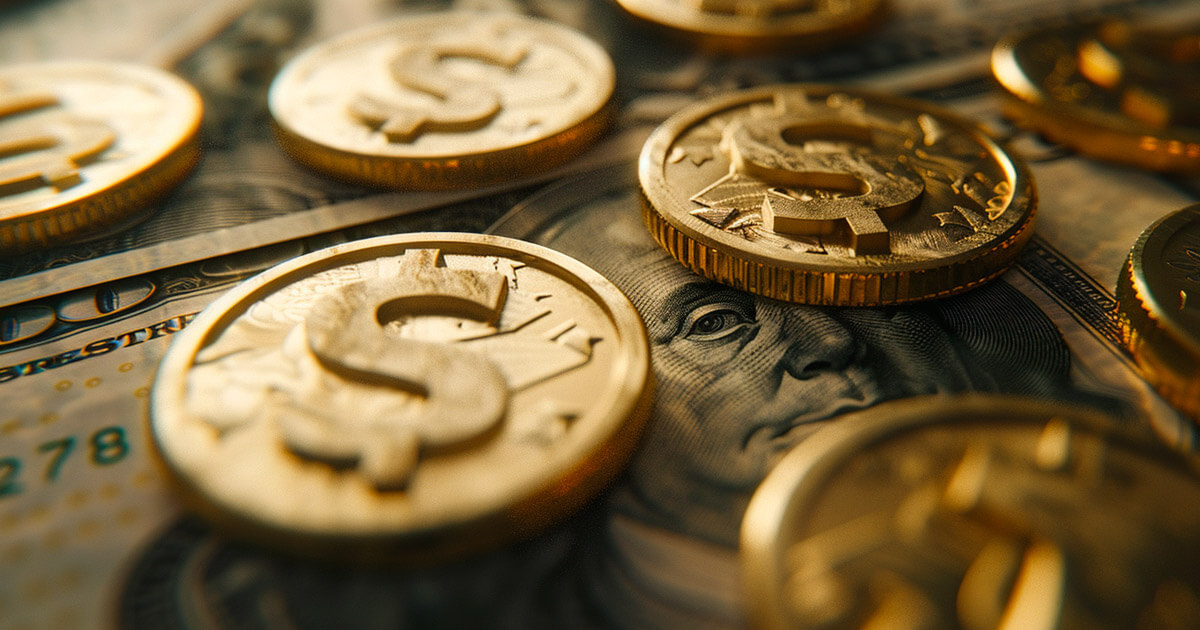
This article is a contributed piece from Christina Comben.
With a current market capitalization of just over $20 million, you might be excused for not being familiar with Verified USD (USDV). This newcomer to the stablecoin market quietly launched on Ethereum in November 2023 and has been progressively rolling out its native omnichain capabilities across multiple ecosystems.
USDV is now live on eight EVM-compatible chains including Arbitrum, BNB Chain, Optimism, and Start. Cryptoslate interviewed Matthew Naif, Head of the Verified USD Foundation and former Algorand CFO, to understand why the industry needs another stablecoin and what makes USDV unique.
The concept of the Verified USD Foundation originated from two organizations: Singapore-based interoperability protocol LayerZero and Matrixport, a crypto financial services firm based in Singapore. Naif explains,
"They were examining what's needed in the future for stablecoins and wanted to take a modern technical approach to align stablecoins with the decentralized ethos of our ecosystem while still maintaining a fully asset-backed stablecoin."
USDV's organizational structure differs from traditional stablecoins, which, while Naif acknowledges have "played a very important role in getting us where we are today," are primarily private entities with trust issues. USDV, on the other hand, is established as a foundation.
"We plan to be significantly more decentralized and have community governance," he says.
USDV utilizes an assessment mechanism called ColorTrace, which enables it to track which partners bring new capital into the USDV system so the yield can be shared.
"The yield isn't shared with the end user," he says, "as that would make it a security and be problematic as a permissionless token, but unlike traditional stablecoins that keep the yield for themselves, we provide a strong incentive for our partners to bring new users and capital into the system."
The Verified USD Foundation doesn't mint new USDV itself but provides the legal, technical, and organizational support for its partners (DeFi protocols, centralized exchanges, OTC providers) to mint it. Once a partner creates USDV, they take the permissionless collateral token STBT (short-term treasury bill token) which is locked into a smart contract to create new USDV, and minted in the partner's color, allowing them to earn yield.
"If they created it, they will continue to earn yield no matter what chain it moves to," he affirms.
USDV is an asset-backed stablecoin. "We're fully backed by short-term treasury bills with a maturity of three months or less and we're aiming for best-in-class transparency. All our collateral is on-chain." USDV's dedicated collateral token, STBT, is issued by an affiliate of Matrixport on-chain. One unit of STBT is locked into a smart contract on the Ethereum mainnet to mint one unit of USDV.
"There's transparency across all the chains so users can always see that one unit of USDV is fully backed by the collateral."
Unlike other stablecoins that provide weekly or monthly audit reports, USDV works with Chainlink to provide 'Proof of Reserve' that shows its auditing in real-time.
"So every day they're verifying the transparency of the collateral."
USDV possesses native omnichain capabilities, which means that while all USDV is created on Ethereum, it can be burned and reminted on any chain it's on, some of which are connected to more than 70 different blockchains: "significantly more than any of the traditional stablecoins," Naif points out.
USDV aims to become the stablecoin available on the highest number of chains, starting with EVM-compatible chains.
"But we plan to explore additional chains, some of the leading non-EVM chains, even Bitcoin Layer 2s. We want to be native on more chains than any other stablecoin." He continues, "If you look at some of the major non-EVM chains, that's where the activity is right now. We believe this will be a big trend over the next year and we definitely want to be there."
Naif doesn't see USDV as competing for a slice of a pie in an already crowded space. Rather, he believes the pie will grow in size so everyone can benefit.
"Looking at the future, some analysts predict up to 30x growth in the stablecoin market in the next five to seven years. I don't think it's about going head-to-head on the existing chains and growing at the expense of others. The market will continue to grow rapidly and we have a competitive advantage in several areas."
Is there anything concerning Naif as the Verified USD Foundation expands?
"I think a challenge for everybody is that regulations are in a state of flux... Maybe we'll see a stablecoin bill. It would be a positive for the industry to have some regulatory clarity." His team is "staying on top of the regulatory landscape," and witnessing the most rapid growth outside the U.S., particularly in emerging markets. "It could be high-inflation economies like Argentina or Venezuela, or emerging economies that want faster and lower costs on foreign exchange... it's great to see crypto finding real-world use cases rather than just numbers go up," he says.
Beyond native chain functionality, USDV's primary strategy for growth is finding great local partners.
"More so than other stablecoins because our business model is based on partnerships. So we're looking for the best OTC desks, and the best community influencers we can work with, and through our unique way of sharing the underlying collateral yield, really partnering with them. It's not just a one-off partnership, we're in it for the long term."
What's next on the horizon for USDV? Naif says USDV is entering its next phase and has plenty of plans, including expanding the team, finding more partnerships, and coming out with some "really exciting end-user initiatives toward the end of the year." Stay tuned.